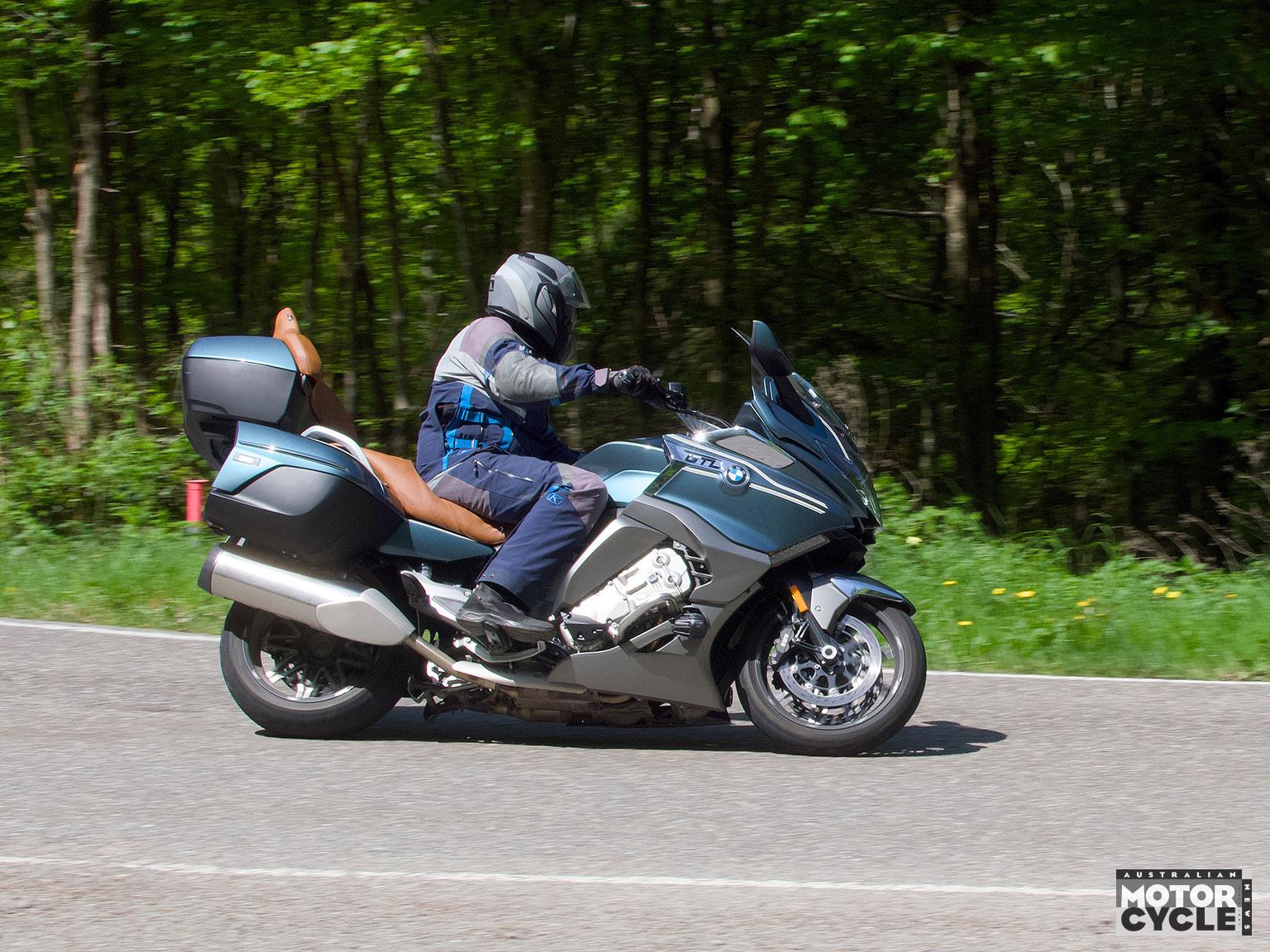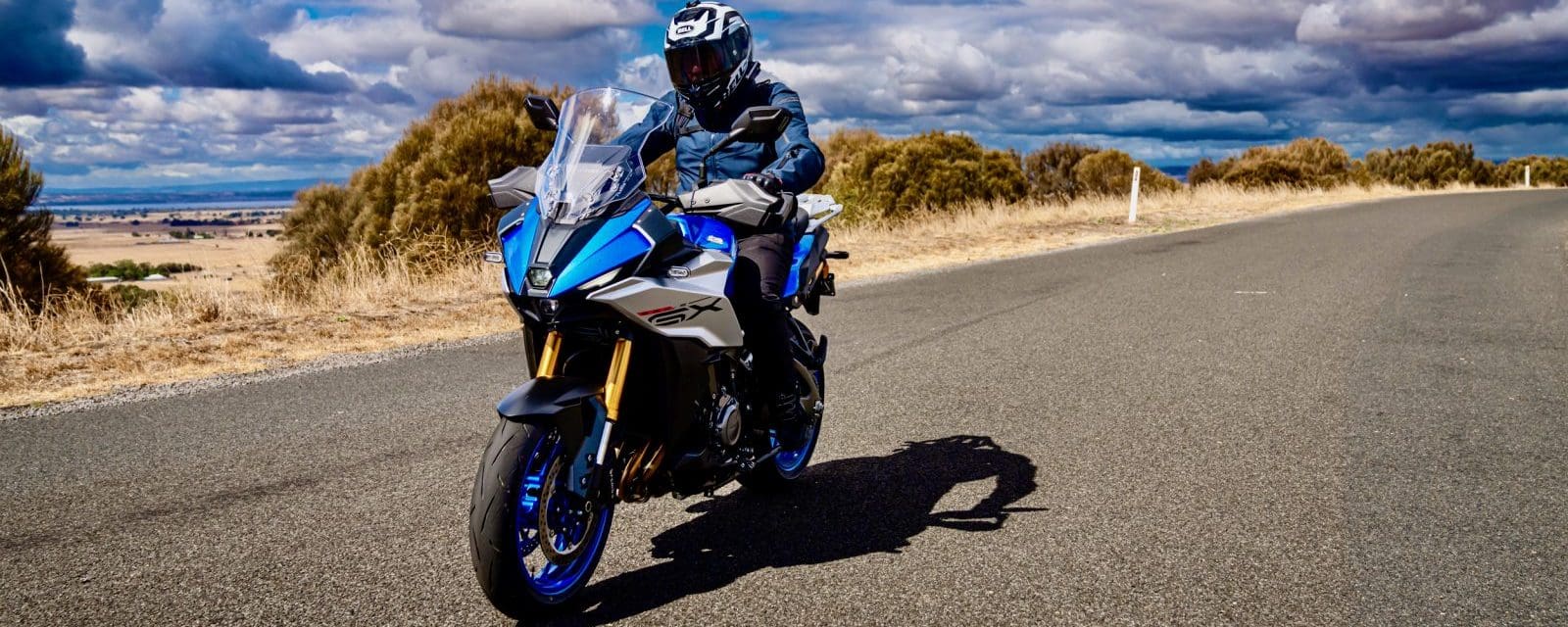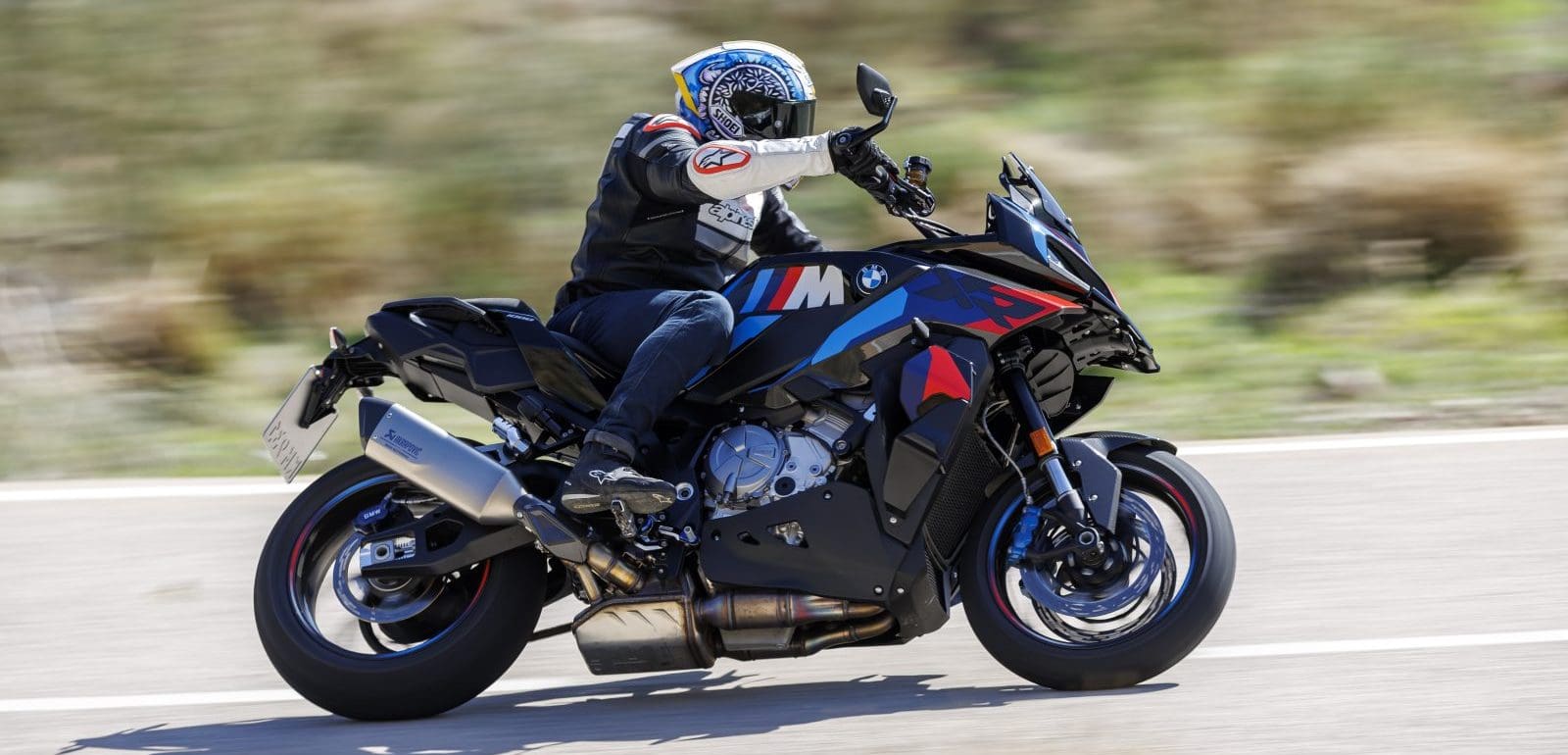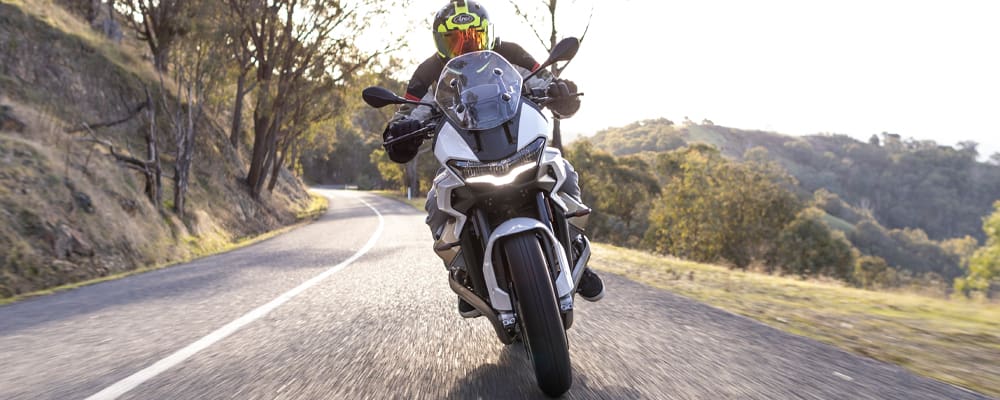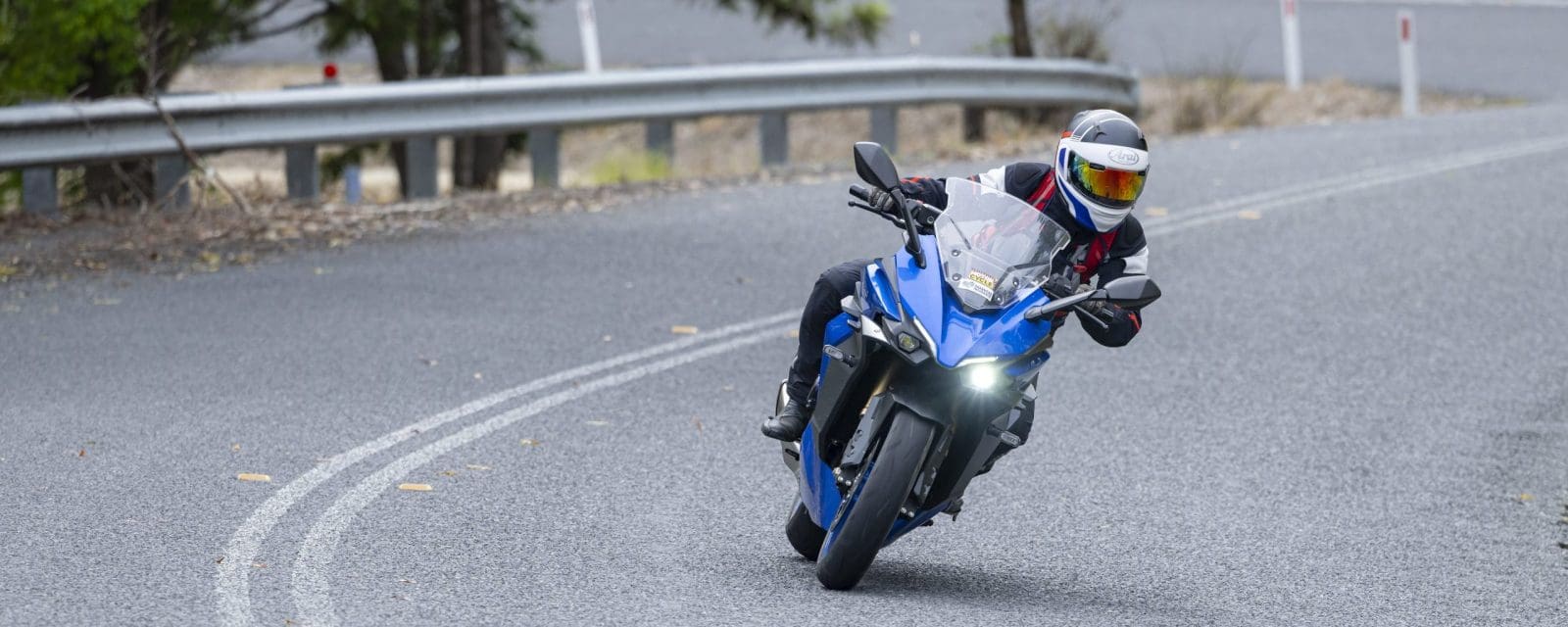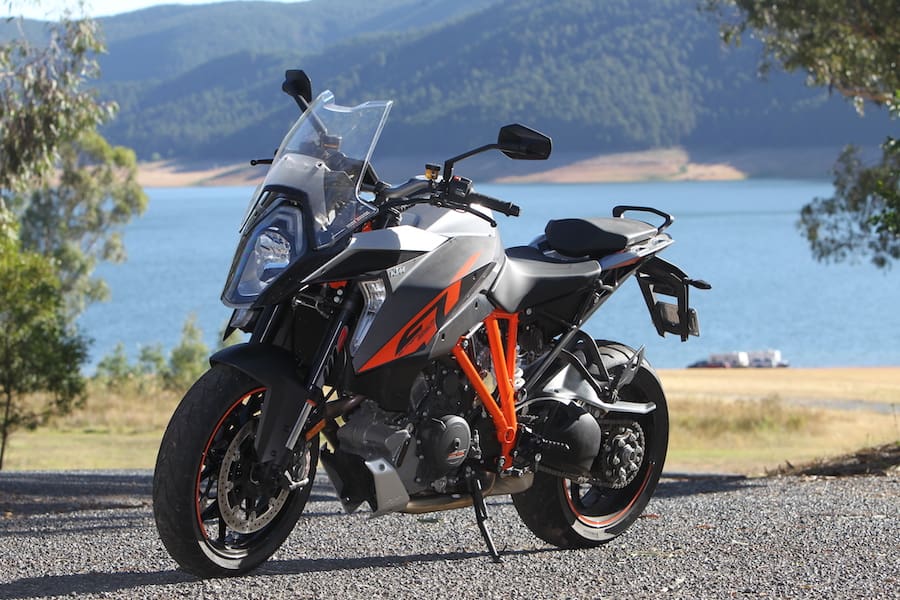Before I get stuck into the new Suzuki GSX-S1000GX, let’s look at its predecessors. I’m a huge fan of the GSX-S1000 nakedbike and the GSX-S1000GT sports-tourer, both incredibly engaging thanks to their potent GSX-R K5 derived 999cc powerplant and their well-sorted chassis that inspires front-end confidence and delivers superb balance through high-speed corners that not many big-bore bikes under $20k can match.
When Suzuki launched the latest iteration of the GSX-S1000 nakedbike in Australia two years ago we were blown away by just how much performance and chassis finesse it managed to fit into such a reasonably priced package. A few months later and Suzuki added the GSX-S1000GT sports-tourer. Again we were astounded by the bang-for-buck equation. We have previously compared both with much more expensive machinery and they have more than held their own.
The roadbike market isn’t as clearly segmented as it once was. There are now several models from various manufacturers that blur the boundaries between what were once obviously sports-tourers and those that were almost road-going adventure bikes. Take AMCN’s 2022 sports-tourer shootout (Vol 72 No 05) as a case in point. Out of the five bikes tested, two were more sports than tourer (the Kawasaki Ninja H2 SX and Suzuki GSX-S1000GT) while the other three (BMW S 1000 XR, Honda NT1100 and Yamaha Tracer 9 GT), were more tourer than sports, thanks to postures resembling adventure bikes…
In that shootout, the GSX-S1000GT came out the winner, partially due to its stonking inline four and its well-balanced chassis, but also thanks to the bike’s excellent value for money equation. To keep the price of the GT below $20k (at the time), Suzuki gave it a more basic spec than its competitors, in particular its manually adjustable KYB suspension package; by contrast, the BMW and Yamaha both had semi-active electronic suspension. Rather than update the GT to match these competitors, Suzuki has instead opted to add a new model to the GSX-S range in the form of the GSX-S1000GX.
Instead of labelling the new GX a sports-tourer like the GT, Suzuki calls it a crossover and, with a more upright riding position and bigger screen, it now more closely resembles the S 1000 XR, NT1100 and Tracer 9 GT.

In the Suzuki line-up, it sits about midway between the GSX-S1000GT and the V-Strom 1050. Suzuki has achieved this without vastly changing the basic GSX-S platform, including engine, gearbox, frame, subframe and 17-inch wheels.
The new GX, however, looks markedly different to the other two models in the GSX-S range, courtesy of all-new bodywork, a larger screen and longer-travel suspension, now with electronic adjustment. The higher-spec Showa suspension means the GX is significantly more expensive than its siblings, but at $25,890 ride away, it still represents great value for money, undercutting its semi-active-suspension equipped rivals – the Yamaha Tracer 9 GT+ is now $27,599 ride-away and the BMW S 1000 XR is $28,670 ride-away.
Like its siblings, the GX is powered by Suzuki’s 999cc inline four out of the GSX-R1000 K5, tuned to make a claimed 112kW (152hp) at 11,000rpm and 106Nm at 9250rpm. There’s no doubt this engine likes to rev – as you’d expect of a powerplant originally designed for a superbike – but it also has plenty of grunt down low, making it flexible and well suited to this crossover role. The engine is mated to the same smooth-shifting six-speed gearbox as used in the other GSX-S models, and a two-way quickshifter is standard fare on the GX.
In the GX, power delivery is managed via a more advanced version of Suzuki’s SDMS system called SDMS-a (Suzuki Drive Mode Selector Alpha), that falls under the SIRS (Suzuki Intelligent Ride System) umbrella. It’s all made possible by the Bosch six-axis IMU. Like ‘basic’ SDMS as found on the other GSX-S models there are A, B and C modes (Active, Basic and Comfort), but SDMS-a also interacts with the GX’s Suzuki Advanced Electronic Suspension (SAES), which incorporates Active Damping Control (ADC) and electronic rear preload adjustment, as well as Roll Torque Control (cornering traction control) and cornering ABS.
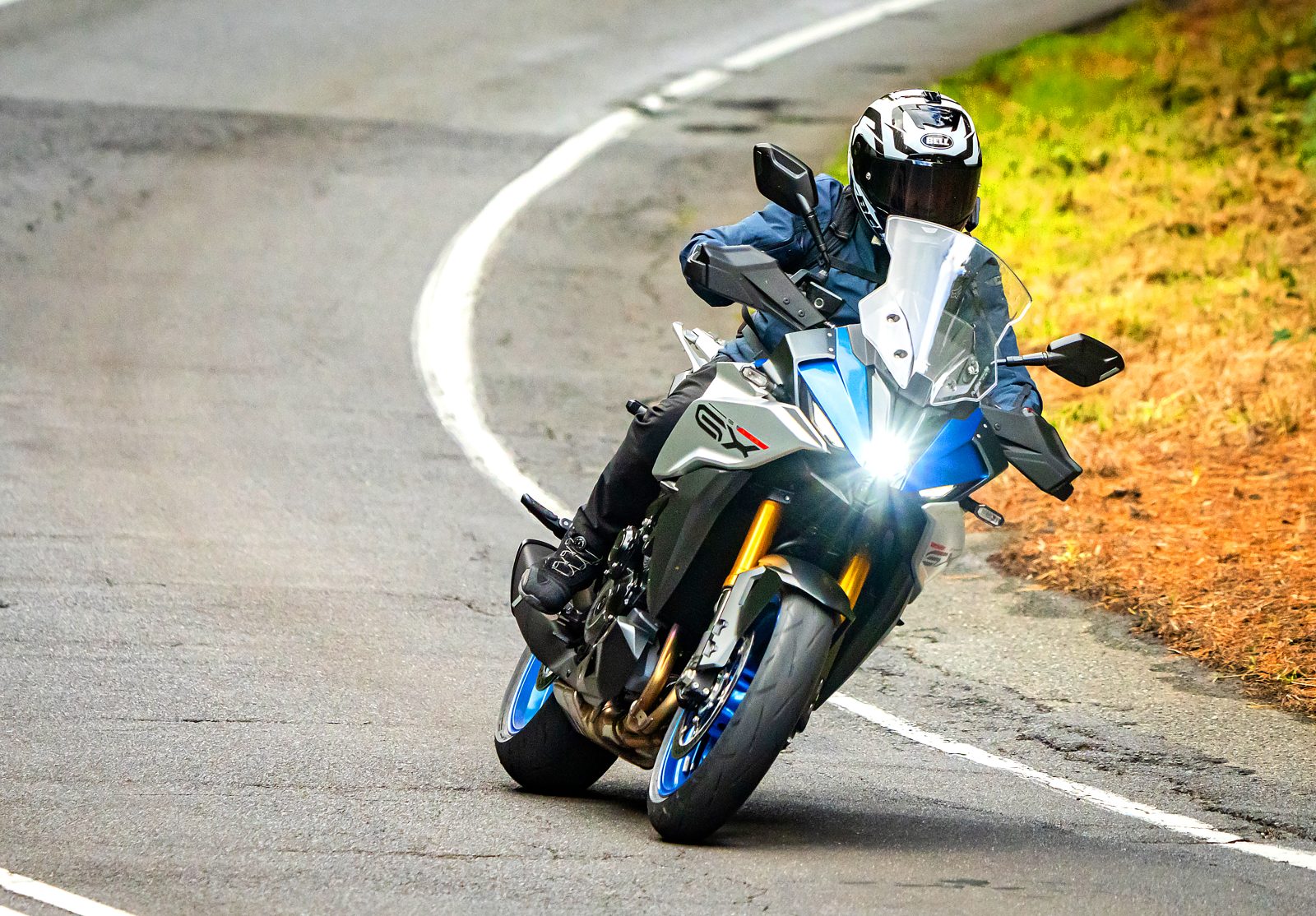
Both A and B modes give access to full power, but in A mode the throttle response is quite snappy and, unless you’re chasing your mates at high speed, you wouldn’t normally pick this mode, instead opting for B mode. But with the SDMS-a system, A, B and C ride modes also correspond to Hard, Medium and Soft suspension settings via the ADC. So A mode really is ideally suited to those times when you want to ride hard, not only giving you faster throttle response, but also a firmer suspension set-up better suited to press-on riding, where you are braking heavily and accelerating rapidly.
Does it work? You betcha! In A mode the base suspension setting gives the GX a sporty feel, to the point that it can feel a bit too firm and harsh over bumpy roads. But herein lies the beauty of the system; simply flick it back to B mode at the press of a button (with the throttle backed off) and you have a softer throttle response and more suspension compliance. Select C mode and the throttle response is further softened, as are the damping settings, while the traction control intervention is increased. As a result, the bike feels compliant over bumpy surfaces, and on the launch ride there were plenty of badly potholed backroads on which to test this.
But what if you just wanted to soften the ride without affecting the cornering TC and throttle response settings? No problem, because in each ride mode you can still individually set the TC level through seven settings (or turn it off) and the ADC through four settings… and, conveniently, the system will remember those settings when you turn the ignition off and on again. As well as damping adjustments, the rear spring preload can be adjusted on the fly, or you can select the Auto setting, which detects the weight on the bike and sets the preload accordingly. As well as Auto, there are preload settings for Single Rider, Single Rider + Gear, and Tandem (two-up). If you want to adjust front preload, you’ll have to dig out an Allen key to do so, but the adjusters at the bottom of each fork leg are easily accessed.
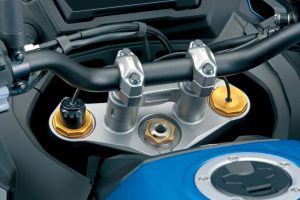

Suspension travel front and rear is a generous 150mm, which is up from 120mm on the other GSX-S models, and this also aids the bike’s impressive ride over rough surfaces. Once you have chosen the settings for the load you have on board, and the terrain you’re riding over, the ride and handling is set up to match – a well-balanced and sporty feel when you want get stuck into it and a cruisy and plush one when you want to sit back and relax. And you can rely on the standard cruise control to keep your speed in check.
Adjusting settings within the SIRS system – ride mode, TC setting and damping and preload settings – is easy thanks to the bright 6.5-inch colour TFT screen and large buttons on the left switchblock.
Despite little time to familiarise myself with the set-up before starting the ride, I reckon I had most of the controls nailed within the first couple of minutes on the bike.

As well as freeways and open country roads, we were treated to a fantastic run through some tight and twisty stuff and the GX showed that it shares its well-sorted chassis characteristics with its siblings. With a 232kg kerb weight, it’s a bit heftier than the 226kg GT, but that extra weight is hard to pick when throwing the GX from side to side. The upright riding position and wide handlebar make changes of direction a doddle and, like the other GSX-S models, it doesn’t take long before you’re entirely confident in the front end. This is not surprising when you consider the similarities between the three models, right down to the same Dunlop Sportmax Roadsport 2 rubber.
That front-end confidence is backed up by the braking package – Brembo calipers grip twin 310mm discs up front while there’s a Nissin caliper at the rear and 220mm disc – the front offering exceptional feel at the span-adjustable lever. The GX also features Suzuki Deceleration Damping Control (SDDC) that uses info from the IMU to adjust suspension damping to match deceleration, minimising fork dive when braking hard. You can’t actually feel SDDC doing its thing, but it does its job in the background and there’s certainly no evidence of excessive fork dive when late braking into corners, or even when performing emergency stops.

There are plenty of Suzuki acronyms on the GX I haven’t mentioned, such as SRAS (Suzuki Road Adaptive Stabilisation) that recognises cobblestones or other uneven surfaces and triggers SFRC (Suzuki Floating Ride Control), which smooths throttle response and adjusts front and rear damping to suit. While there were no cobblestones on the launch ride, there was a short gravel road section that the GX dealt with admirably, and a few level railway crossings that didn’t faze it.
After a full day in the saddle, I began to think that crossover is a pretty apt term to describe the GSX-S1000GX. It really is sporty when you want it to be but can quickly transform into a comfortable backroads tourer at the press of a button, and thanks to its semi-active suspension it’s a pleasure to ride over a wide variety of road surfaces. And the 19-litre tank should allow for around 300km between refills.
Importantly for this style of bike, the GX is also supremely comfortable thanks to its upright riding position, generous 845mm-high seat, and high and wide ’bar. Compared to the GT, the GX’s handlebar is angled so it’s 55mm closer to the rider, while it’s 50mm longer resulting in a 14mm wider grip placement. Likewise, the GX seat is 35mm taller than the GT’s so the rider’s legs aren’t bent as much.
The screen can be set at three heights, but you need to unbolt it to adjust. Getting it how you like it will be a case of trial and error then set and forget. Having said that, the middle position suited my 167cm height nicely and the plastic handguards provided a bit of extra weather protection. The pillion seat is more than an afterthought too, and the rear carrier incorporates big grab handles for pillions and makes it easy to secure luggage.

I was never all that fond of the stacked LED headlights on the naked GSX-S1000 but I reckon they look much better on this GX model, framed better by the plastic of the fairing.
In fact, I quite like the styling of the GX, and the two colour options – Metallic Triton Blue and Glass Sparkle Black – look trick, as does the general fit and finish.
As it shares much of its DNA with its siblings, it would no doubt be pretty easy for Suzuki to flow all that GX tech down to the naked GSX-S and the GT. Sure, it would up the price a bit, but the tech works so well I reckon there would be a market for it. But for now, the GX is one of the most tech-laden roadbikes Suzuki has ever developed.
As an all-round crossover it most definitely fulfils its design brief.
PROS: Supremely comfortable, loaded with all the electronics you need for fast riding and priced right.
CONS: Heated handlebar grips should be a standard fitting and screen is not easily adjusted.
TEST: DEAN MELLOR PHOTOGRAPHY: MARK DADSWELL & LEWIS CROFT
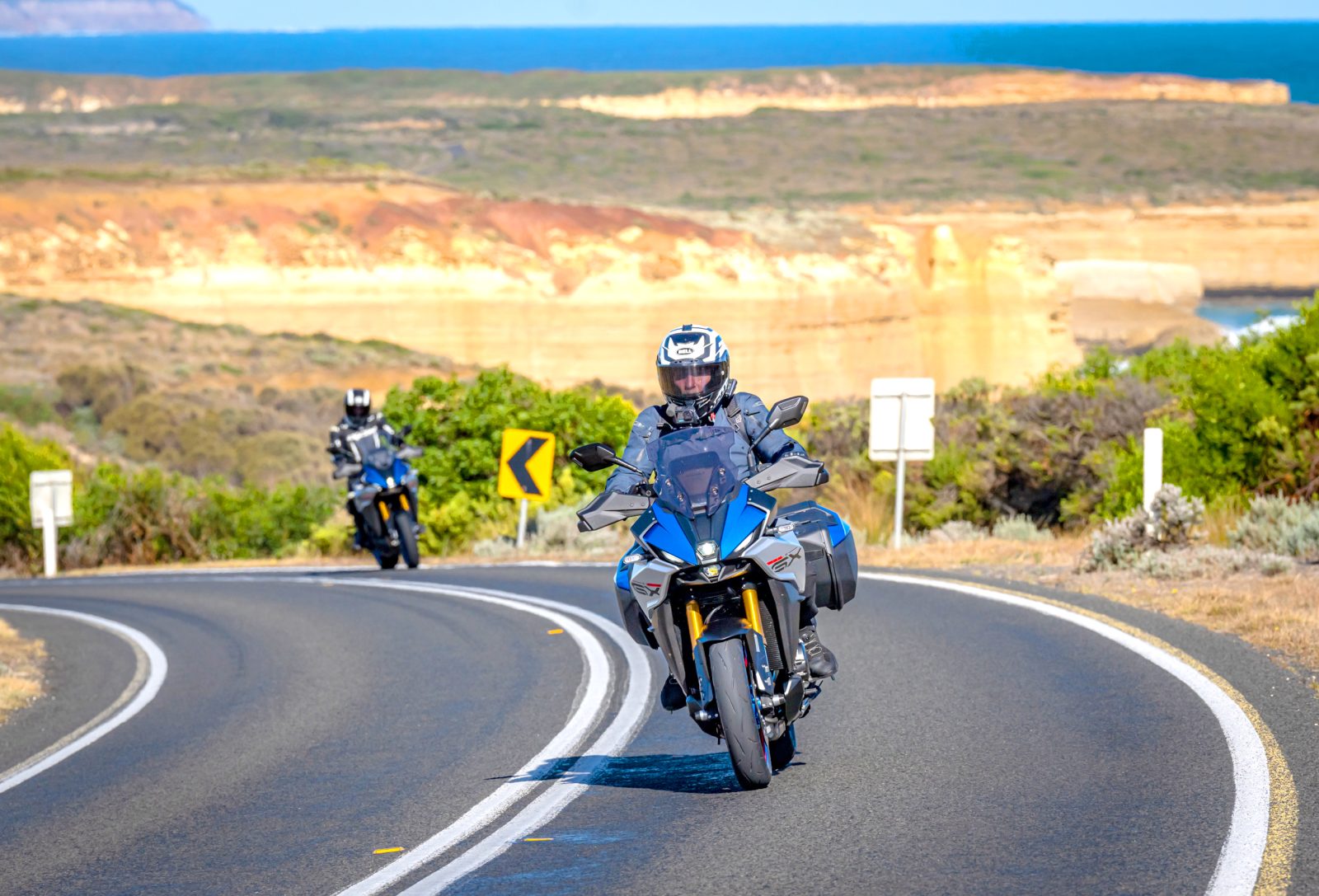
DRIVETRAIN
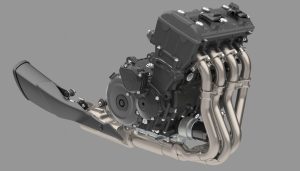
Suzuki describes the GSX-S’s 999cc DOHC inline four-cylinder engine as “a descendant of Suzuki superbike engines” that has undergone “rounds of improvements and fine tuning over the years”.
Claimed peak power is 112kW at (150hp) at 11,000rpm and torque is 106Nm at 9250rpm. Importantly for this crossover-style bike, as well as a healthy top end it makes a broad spread of torque throughout the rev range. It’s a ripper of a powerplant and it sounds great too, although is somewhat muffled by the Euro 5-compliant 4-2-1 exhaust system.
Additional features include one-touch start, a clutch assist system to lighten feel at the lever, a slipper clutch, a smooth-shifting six-speed gearbox and a fast and effective up and down quickshifter. Thanks to the quickshifter, between certain road speeds the cruise control will maintain the set speed when you shift gears without using the clutch.
ACCESSORIES
The GSX-S1000GX is available with a swag of optional goodies:




• Centrestand $726.00
• Red Brembo calipers (front) $1236.50
• Side case set $1984.70
• Tank bag (small) $265.40
• Tank bag (large) $392.80
• Tank bag fixation ring $97.90
• Tank pad $82.80
• Wheel rim decals $62.80
• Axle sliders $360.80 (each axle)
• Premium seat $536.90
• Low seat $260.10
• Billet clutch lever $284.36
• Billet brake lever $386.70
• Heated grip set $767.50
• Smoked short screen $171.30
(Prices don’t include fitting)
SPECS

ENGINE
Capacity 999cc
Type Inline four cylinder, DOHC, four valves per cylinder
Bore & stroke 73.4 x 59mm
Compression ratio 12.2:1
Cooling Liquid
Fueling EFI
Transmission Six-speed
Clutch Wet, multi-plate, slipper type
Final drive Chain
PERFORMANCE
Power 112kW (150hp) @ 11,000rpm (claimed)
Torque 106Nm @ 9250rpm (claimed)
Top speed 275km/h (est)
Fuel consumption 6.2L/100km (claimed)
ELECTRONICS
Type Bosch
Rider aids Cornering ABS, cornering traction control, wheelie control, roll torque control, semi active suspension cruise control, two-way quickshifter
Rider modes Active, Basic and Comfort
CHASSIS
Frame material Aluminium
Frame type Twin-spar
Rake 25.5°
Trail 97mm
Wheelbase 1470mm
SUSPENSION
Type Showa
Front: 43mm USD SFF-CA fork, electronically adjustable compression, rebound and preload, 150mm travel
Rear: Monoshock, electronically adjustable compression and rebound, manually adjustable preload, 150mm travel
WHEELS & BRAKES
Wheels Cast alloy
Front: 17 x 3.5 Rear: 17 x 6.0
Tyres Dunlop Sportsmax Roadsport 2
Front: 120/70ZR17
Rear: 190/55ZR17
Brakes Brembo/Nissin, ABS
Front: Twin 310mm discs, four-piston calipers
Rear: Single 220mm disc, twin-piston caliper
DIMENSIONS
Weight 232kg (kerb, claimed)
Seat height 810mm
Width 925mm
Height 1350mm
Length 2150mm
Ground clearance 155mm
Fuel capacity 19L
SERVICING & WARRANTY
Servicing First: 1000km
Minor: 12,000km
Major: 24,000km
Warranty Three years, unlimited km
BUSINESS END
Price $25,890 (ride away)
Colour options Metallic Triton Blue or Glass Sparkle Black
Contact suzukimotorcycles.com.au
